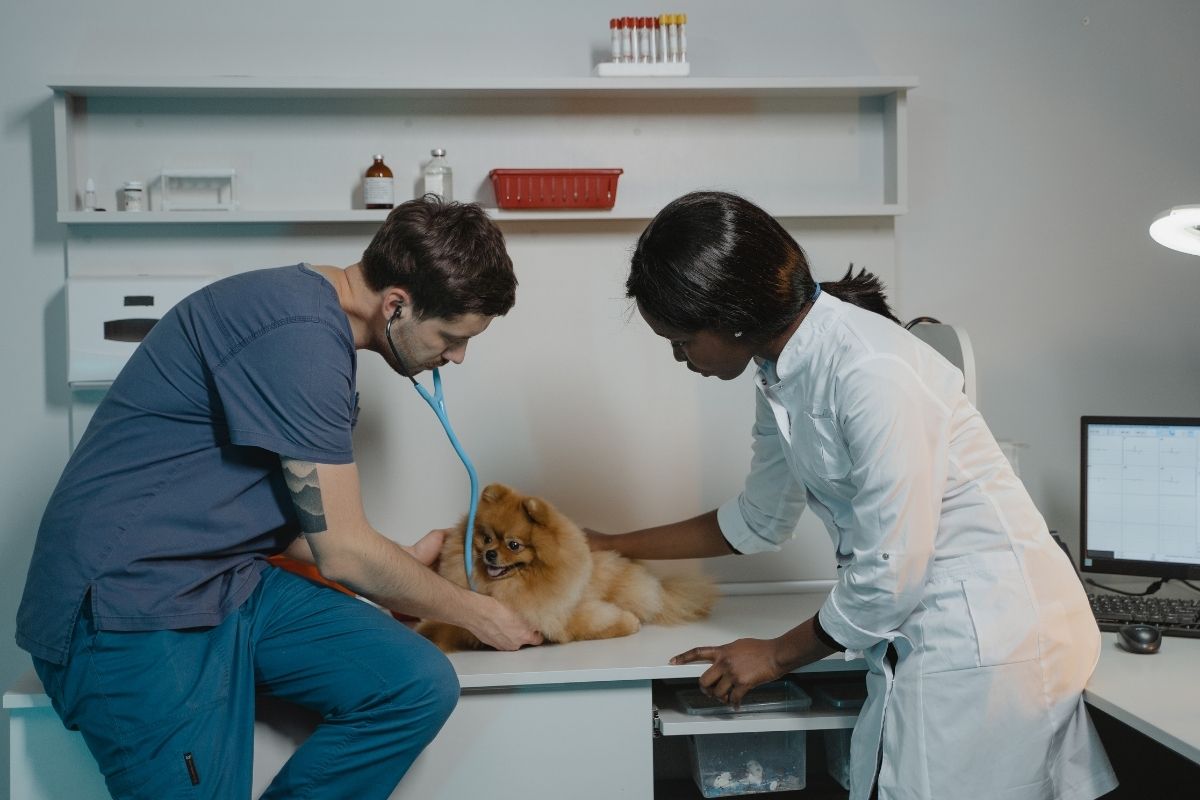Medicine is one of the most important fields in the world. It is the science and practice of healing. People in medicine are involved in making the sick well and the healthy strong.
Medicine as a discipline and area of study has come a long way since its invention in 5th century BCE Greece. It now encompasses a range of specialties and subspecialties. Billions of dollars go to institutions and research programs and projects designed to advance our knowledge of the different illnesses that afflict the human body and how to defeat them.
Billions more go to the practitioners, hospitals, clinics, and other health providers that deal with everyday patient care. Here are some of the jobs in the medical field.
Types of Jobs in the Medical Field
1. Physician and surgeon

Physicians engage in the diagnosis of medical illnesses and injuries. To do so, they record a patient’s medical history and carry out a series of tests. Based on the results, the physician will develop a treatment plan.
Surgeons are physicians with specialized training. They treat disease, injuries, and deformities with highly engineered tools and instruments. A surgeon uses the two latter for the express purpose of repairing damaged tissue, bones, and major organs.
Surgeons can also use their skills to perform cosmetic surgery, which aims to enhance the appearance of a patient. Physicians work in numerous specialties including, radiology, opthalmology, neurology, immunology, orthodpedics, gastroenterology, dermatology, cardiology, pediatrics, psychiatry, and internal medicine.
2. Dentist

Dentists diagnose and treat problems with gums, teeth, and other areas of the mouth. They also give patients tips on how to care for their teeth and gums. Dentists remove decay from teeth, fill cavities, and conduct repairs to damaged teeth or extract them if necessary.
Dentists also help people replace teeth they have lost owing to old age or a medical condition. They make an impression on patient teeth. With these impressions, they are able to make dentures and other dental appliances. Dental professionals also advise patients about food and drink that are good and bad for their oral health.
To do their work, dentists use scalpels, brushes, forceps, probes, mouth mirrors, drills, and X-ray machines. There are a great many dental specialties. They can work as periodontists, pediatric dentists, orthodontists, oral pathologists, oral and maxillofacial surgeons, endodontists, dental public health specialists, and dental anesthesiologists.
More senior and experienced dentists have the option of returning to academia to teach and carry out scholarly research.
3. Podiatrist

They provide medical care for feet, ankles, and lower legs. They are also trained to diagnose diseases in these areas and to perform surgery on them. A podiatrist may be needed to remove bone spurs or repair fractures.
They may also operate on feet and ankles to correct deformities. Podiatrists also teach their patients how to care for their feet through practical advice and the introduction of general wellness techniques. Podiatrists have a special duty of care because they may be the first to learn that a patient is at risk for diabetes or vascular disease.
The first signs of these illnesses can show up in the lower body. Podiatrists also treat a range of foot ailments, including ingrown toenails, heel spurs, calluses, arthritis, and congenital deformities.
4. Pharmacist

The job of a pharmacist is to dispense medications prescribed by physicians. They must have extensive knowledge of the safe and effective use of such medications. A pharmacist can take on a host of other duties, including giving immunization shots, conducting health and wellness screenings, and advising patients on how to live healthier lives.
However, the most important task of a pharmacist is to verify that the physician’s instructions are correct and that medications are bottled and packaged according to the quantities set by the former. A pharmacist must also ensure that the medication being prescribed will not interfere with other medications the patient is taking. They must also ensure that the prescription will not adversely affect the patient or exacerbate their medical condition.
A pharmacist must make sure that the patient knows how to take the medication properly, and that all the patient’s questions are answered. Pharmacists work closely with the patient’s insurance company to ensure that they receive the medications they need. Most pharmacists work in dedicated pharmacies and drug stores.
5. Nurse practitioner

This field consists of people who are qualified as Advanced Practice Registered Nurses or APRNs. They provide specialized care for their patients, which includes both primary and specialty care. Nurse practitioners take medical histories and note patient symptoms.
They may also perform examinations when a doctor is not available and help create treatment plans for patients. These professionals are also trained on several pieces of medical equipment, and they are capable of operating and monitoring the latter. One of the most important duties of a nurse practitioner is to administer medications to their patients and analyze patient response.
Nurse practitioners can also perform a host of other duties, including prescribing medication, ordering medical tests, and diagnosing medical conditions. It is possible for nurses to specialize. Some choose to work exclusively with children, pregnant women, elderly people, and persons with mental health disorders.
6. Optometrist

Optometrists specialize in the eyes and parts related to them. They diagnose problems that patients have with their eyes and treat them. These medical professionals are the ones who prescribe glasses and contact lenses for people who need corrective eye care.
An optometrist is the only one qualified to give a vision test. They diagnose diseases and conditions of the eye such as glaucoma, near-sightedness and far-sightedness. Optometrists are also trained to perform surgery that corrects eye problems.
Diabetes and high blood pressure often cause symptoms and conditions that first appear in a vision test. Optometrists are trained to detect such signs and refer the patient to the appropriate physician.
7. Physician Assistant

These professionals work closely with physicians, surgeons, nurses, and other healthcare workers. Though a college degree is not required for this job, Physician Assistants must undergo extensive training before they are allowed to work unsupervised. Once suitably qualified, they can take patient medical histories, order diagnostic tests and interpret them.
Some PAs are allowed to perform advanced treatments such as setting broken bones, prescribing medication, and teaching patients how to manage their illness. They can also examine children and give them their vaccination shots. Physician assistants work in emergency rooms, operating rooms, doctor’s offices, and psychiatric wards.
They also form the core of patient outreach, which is crucial to ensuring that patients follow through on care and treatment plans.
8. Veterinarian

Also called animal doctors, veterinarians perform many of the same services as physicians who serve humans. These include examinations with the purpose of diagnosing illnesses and determining whether an animal is healthy. Veterinarians are also qualified to perform surgery on animals.
Vets test their animal patients for diseases that are common to them and give them vaccinations. Some pets, dogs in particular, age quickly. They can suffer conditions and injuries that are untreatable and leave them in a great deal of pain.
When this happens, a family may decide to put them down. The veterinarian is the only professional qualified to euthanize animals in a way that minimizes their pain and discomfort. Some vets become specialize in animals that are part of the food supply chain.
Their patients are pigs, cows, sheep, and cattle. These vets travel to farms and ranches and teach owners how to adequately house and feed these animals. It is also important for vets to work with physicians and health care authorities to ensure that the public’s health is not endangered by a rogue animal or a highly contagious virus.
9. Physical therapist

Physical therapists help patients regain their mobility after a major trauma or illness. They also help them deal with and manage pain. Physical therapists work mostly in rehabilitation facilities.
They also help people diagnosed with chronic illnesses. People who suffer from strains, sprains, broken bones, arthritis, and amputations require the services of a physical therapist. They also treat people with fractures, neurological disorders, and sports injuries, as well as people who have suffered a stroke or cerebral palsy.
Physical therapists give their patients exercise and equipment that is designed to ease their pain. They also carry out hands-on therapy techniques that increase the patient’s ability to move. As time goes by, the therapist monitors the patient’s progress and adjusts the regimen to maximize the potential for improvement.
Some physical therapists specialize in areas of care. Geriatric, orthopedic, stroke, spinal cord, and sports injury are a few of these specialties.
10. Occupational therapist

These professionals treat patients who are disabled, injured, or ill and need help recovering and improving so that they can live their everyday lives. Certain illnesses, injuries, and conditions lead to permanent disabilities. Occupational therapists help patients use the aids and devices that will help them adjust to the new reality of their life.
Such professionals help patients use leg braces and wheelchairs. They also help them learn how to feed themselves. Occupational therapists work with the very young and the very old.
They are instrumental in helping schools and workplaces accommodate students and employees with disabilities. Occupational therapists are also employed in mental health settings. In these settings, occupational therapists teach patients how to ride a bus, how to balance a budget, and how to manage their time.
Occupational therapists also help recovering addicts get on with their lives.
A Brief History of Medicine
Medical practice has been around since at least the time of ancient Egypt. Around 2600 BCE, the medical practitioner Imhotep produced a written work that detailed over 200 medical conditions. However, it was not until the Greek physician Hippocrates that medicine as we know it began to develop. Hippocrates, who lived and worked in 5th century BCE Athens, is credited with being the Father of Modern Medicine.
His greatest contribution to the field was his insight that diseases have natural rather than supernatural causes. He is also singled out for having established the first oath of conduct for physicians. The Hippocratic oath is still used around the world today.
The Greek physician Galen, who lived and worked in 2nd century Turkey (at the time a part of the Roman empire), also advanced the field. His theory of the four humors was the first attempt to describe personality traits. He also dissected primates and attempted to extrapolate those findings to the human body.
Though he had limited success, the idea of using such a method to gain insight into human physiology and disease was prescient. And again, it is still in use today. Galen also made advances in public health by designing some of the first sewage systems.
In medieval times, the field of medicine advanced slowly, and in some instances reverted to superstition. Bleeding was a widely used cure for a range of conditions as was the administration of laxatives. On the other hand, the Middle Ages saw the construction of the first public hospitals in Europe and the Islamic World.
The brilliant 15th-century intellectual and artist Leonardo da Vinci contributed greatly to our understanding of human anatomy. His detailed sketches of internal organs and systems after careful dissection of corpses advanced the field tremendously. In the 17th century, the English physician William Harvey discovered that the heart pumps blood around the body.
Perhaps the biggest breakthrough in the 18th century was the development and administration of vaccines in Europe and America. Vaccination had been in practice throughout Africa for centuries. It was not until the 1700s did it become accepted practice in the Atlantic World.
Smallpox outbreaks were especially common and deadly. Vaccines helped to dull their lethality and slow the rate at which they spread. Thomas Jefferson was a huge promoter of vaccination.
He had himself, his family, and his slave mistress Sally Hemings and her brother inoculated when he was the American ambassador to France. His friend and fellow revolutionary John Adams recorded his experience of being vaccinated in the 1760s in a series of letters to his future wife Abigail Smith. The 19th century saw even more advances in medicine, many of which remain in practice today.
This was the age in which anesthetics were first used. It also saw the development of the germ theory of disease. The latter was especially important.
Until then, as many patients died from contracting bacterial diseases as did from their original injuries and illnesses. The 20th century saw the rise of psychiatry and treatments for a range of mental health issues. It also saw the continued development of vaccines and antibiotics.
In time, smallpox was wiped out, as were typhus, polio, and diphtheria. Tuberculosis, once a common killer, is now rare. In the 21st century, advancements in genetic science and drug medications have helped people in the medical profession be even more effective in alleviating pain and suffering.
